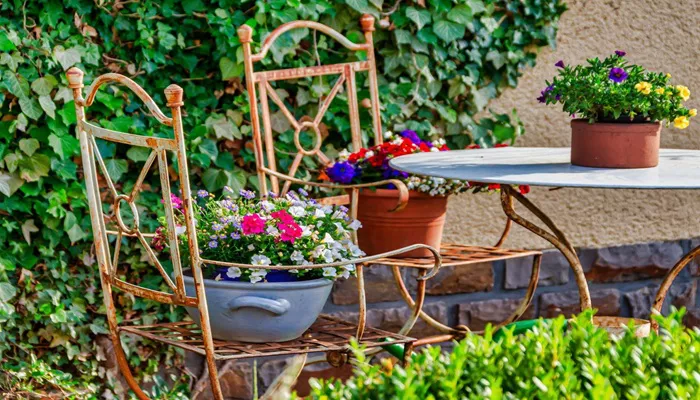Transforming Your Shady Yard into a Beautiful Garden.
Many gardeners face the challenge of creating a vibrant garden in a shady yard, where only a limited number of plants seem to thrive. While the cool shade from trees is appreciated, gardeners often desire a visually appealing space. The goal is to create a lush, colorful garden even in less sunny conditions.
A well-planned shade garden can bring immense joy. Working in such a garden on hot days can be refreshing, and relaxing in it later, especially in the late afternoon, offers a delightful experience. With some thoughtful planning and selection of suitable plants, you too can enjoy a beautiful summer garden in a shaded area.
Choosing the Right Plants
When planning a shade garden, consider plants with both colorful flowers and vibrant foliage. Each type adds unique charm. It’s important to choose plants with varying textures, foliage colors, and water needs. Opting for a color palette that includes different shades can enhance the garden’s visual appeal. Incorporating plants with diverse leaf colors, like cream, gold, or white, can prevent the garden from looking monotonous.
Recommended Shade Plants
Hardy Geranium ‘Rozanne’: This perennial is a great choice for a border. It blooms all summer with striking violet-blue flowers. Note that Hardy Geranium ‘Rozanne’ differs from annual geraniums, which are not suitable for long-term garden use.
Hardy Begonias: These plants are perfect for adding color over an extended period with white or pink blooms. They grow well in both damp and dry areas and self-seed, creating a stunning display. However, avoid disturbing the ground in early spring to protect their growth.
Astilbe: Ideal for moist soil, Astilbe comes in various colors like red, white, pink, coral, and violet. It thrives in areas that are slightly wet.
Oriental Lilies: These lilies flourish in shaded gardens and bloom at different times, providing a long-lasting display. Plant bulbs in spring at a depth of 8 to 10 inches in well-drained, compost-enriched soil for best results.
Toad Lily: Known for its small, intricate flowers resembling orchids, the Toad Lily adds an exotic touch to your garden. Its foliage varies by cultivar and often features two-tone green leaves.
Hostas: A favorite among shade gardeners, Hostas offer a variety of textures, shapes, and sizes. Large varieties like ‘Empress Wu’ and ‘Sun and Substance’ can become focal points, while smaller varieties add subtle charm. Hostas like ‘Royal Standard’ and ‘White Feathers’ provide contrasting colors and fragrant blooms.
Bunnera: Recommended varieties include ‘Queen of Diamonds,’ ‘Queen of Hearts,’ and ‘Jack Frost.’ These plants produce pale blue flowers and attractive foliage, adding elegance to shady spots.
Japanese Forest Grass ‘All Gold’: This ornamental grass forms a mound of small, gold leaves that complement darker foliage and brighten the garden.
Ferns: Ideal for adding an airy look, ferns are low-maintenance and come in various sizes. Maidenhair ferns and autumn ferns add distinctive textures, while cinnamon ferns bring a unique rusty brown hue.
Solomon’s Seal: With its graceful, arching stems, Solomon’s Seal adds elegance to shade gardens.
Gingers: ‘Callaway Ginger’ with its evergreen, silver-white mottled leaves forms a dense clump and resists deer. Annual coleus offers vibrant designs and colors.
Hydrangeas: Varieties like Annabelle (Arborescence) and macrophylla hydrangeas thrive in shade. Arborescence hydrangeas, including ‘Annabelle,’ are available in various colors, while new macrophylla types like ‘Bloomstruck’ and ‘Summer Crush’ are suitable for areas with late frosts.
Planning Your Shade Garden
Understanding your garden’s specific shade type is crucial. Light shade means some filtered sunlight, while deep shade indicates complete blockage of direct sunlight by large trees. Also, assess your soil’s type and moisture level—whether it is alkaline or acidic and how damp or dry it is. These factors will guide you in selecting the best plants.
Creating a shade garden can be a rewarding experience. With the right planning and plant choices, your shaded yard can become a vibrant and enjoyable retreat.


